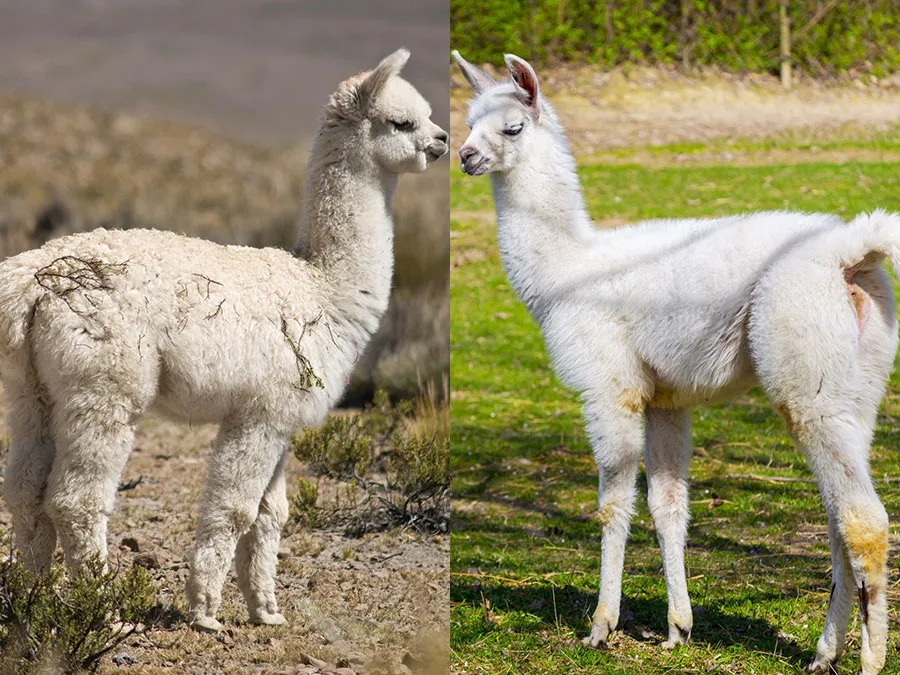Llamas and alpacas are both members of the camelid family native to South America, but they have several differences in terms of their appearance, behavior, and uses. Here are some key distinctions between llamas and alpacas:
1. Size and Appearance:
- Llamas: Llamas are larger than alpacas, typically standing between 5.5 to 6 feet tall at the shoulder and weighing between 280 to 450 pounds (127 to 204 kilograms). They have long, banana-shaped ears and a straighter profile, with a coarse outer coat and a softer undercoat.
- Alpacas: Alpacas are smaller and more compact than llamas, usually measuring around 3 feet tall at the shoulder and weighing between 100 to 200 pounds (45 to 90 kilograms). They have shorter, spear-shaped ears and a more rounded appearance, with a dense, fine fleece that comes in a variety of colors.
2. Fiber Quality:
- Llamas: Llamas have coarser, less desirable fleece compared to alpacas. Their wool is typically used for rugs, ropes, and other durable products rather than clothing or textiles.
- Alpacas: Alpacas produce a finer, softer fleece that is highly prized for its warmth, softness, and hypoallergenic properties. Alpaca fiber is used to make luxurious textiles, garments, and accessories, ranging from sweaters and scarves to blankets and rugs.
3. Behavior and Temperament:
- Llamas: Llamas are known for their strength, intelligence, and protective instincts. They have been used for centuries as pack animals and guardians of livestock, thanks to their alertness and territorial nature. Llamas are generally more independent and assertive compared to alpacas.
- Alpacas: Alpacas are gentle, docile creatures with a calm and easygoing temperament. They are social animals that thrive in herds and are often raised for their fleece rather than for work or transport. Alpacas are known for their curious and friendly nature, making them popular as pets and companions.
4. Use and Purpose:
- Llamas: Llamas have historically been used as pack animals in the Andean region, carrying loads of supplies and equipment over rugged terrain. They are also used as guard animals to protect livestock such as sheep and goats from predators.
- Alpacas: Alpacas are primarily raised for their fleece, which is sheared annually and processed into yarn and other fiber products. They are also kept for breeding, show, and as pets, with some farms offering opportunities for agro-tourism and interaction with these gentle animals.
5. Habitat:
- Both llamas and alpacas are native to the Andean region of South America, where they have been domesticated for thousands of years by indigenous cultures such as the Incas. They are well adapted to the harsh mountainous environments of the Andes, where they graze on tough, high-altitude vegetation and endure extreme temperature fluctuations.
In summary, while llamas and alpacas share a common ancestry and are both valued for their contributions to Andean culture and economy, they have distinct differences in terms of size, appearance, behavior, and uses. Whether as pack animals, guardians, or sources of fiber, llamas and alpacas each play a unique and important role in the lives of the people who raise and care for them.

